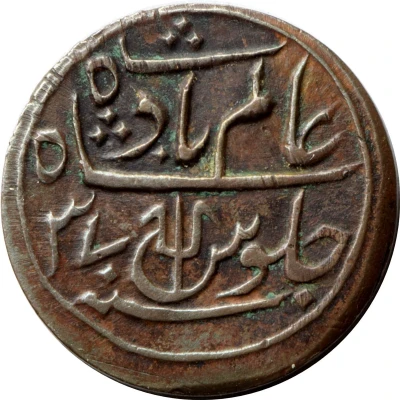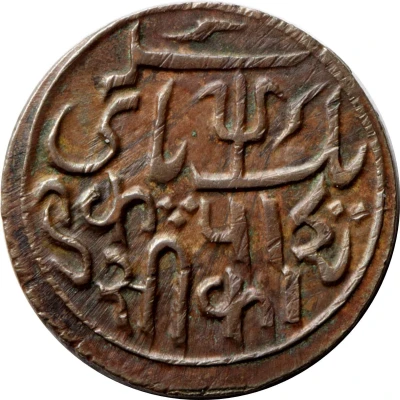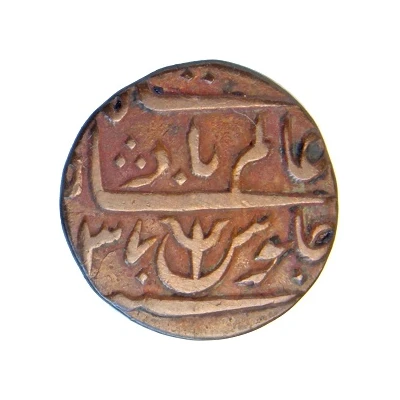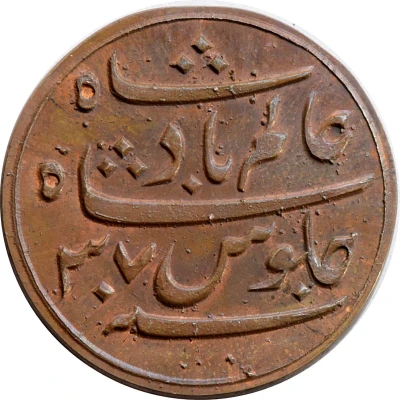
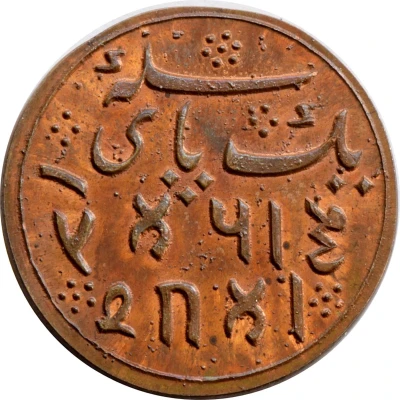

© Joseph Kunnappally
1 Pice - Shah Alam II ND
1809 year| Copper | 6.23 g | 24.7 mm |
| Issuer | Bengal Presidency (British India) |
|---|---|
| Type | Standard circulation coin |
| Year | 1809 |
| Value | 1 Paisa (1⁄64) |
| Currency | Rupee (1765-1835) |
| Composition | Copper |
| Weight | 6.23 g |
| Diameter | 24.7 mm |
| Shape | Round |
| Orientation | Medal alignment ↑↑ |
| Demonetized | Yes |
| Updated | 2024-10-05 |
| Numista | N#89638 |
|---|---|
| Rarity index | 85% |
Reverse
The value in two languages,
Persian: Yek pai sikka
Devnagari: Ek pai sikka
Translation: One pie coin
Edge
Plain
Comment
- A copper coinage struck at the Calcutta mint for Benares province. Only the double pice was struck in 1807-1808. All three, double pice, 1 pice and 1/2 pice was struck in the years 1808-10. All three were put into circulation by 1809- All the proofs so far examined are strikings from rusty dies. They appear to have been struck during the period 1820 - 1840. The most common coin of the currency issue is the half pice value
Interesting fact
One interesting fact about the 1 Pice - Shah Alam II ND (1809) coin from Bengal Presidency (British India) is that it was made of copper, which was a common material used for coinage during that time period. Copper was chosen for its durability and affordability, as it was a relatively inexpensive metal compared to other options like gold or silver. Despite being made of a less valuable metal, the coin still held significant value as a form of currency and was widely used in trade and commerce. Today, coins like this are highly sought after by collectors and can be valuable additions to any collection.
